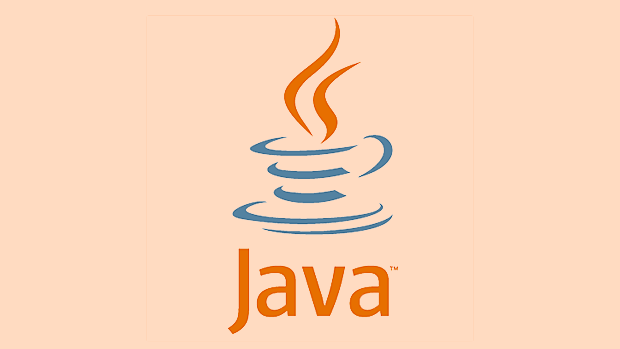Java Optional example
Optional clearly expresses intentions and reduces code noise for null judgments. 1. Optional.ofNullable is a common way to deal with null objects. For example, when taking values from maps, orElse can be used to provide default values, which makes the logic clearer and more concise; 2. Use chain calls maps to achieve nested values, safely avoid NPE, and automatically terminate if any link is null and return the default value; 3. Filter can be used for conditional filtering, and subsequent operations will continue to be performed only if the conditions are met, otherwise it will jump directly to orElse, which is suitable for lightweight business judgment; 4. It is not recommended to overuse Optional, such as basic types or simple logic, which will increase complexity. It is more appropriate to directly return null or throw exceptions in some scenarios.

Using Java Optional is actually much more useful than you think.

Many people think Optional is a "decoration" that prevents null pointers, but when you are really using it in a project, you will find that it not only makes the code clearer, but also helps you avoid many potential bugs. Let’s take a look at how to use Optional through several actual scenarios.
1. Optional.ofNullable is the most commonly used entry
Optional.ofNullable is the most common practice when dealing with objects that may be null. For example, take the value from the map:

Map<String, String> userMap = getUserMap();
String name = Optional.ofNullable(userMap.get("name"))
.orElse("default_name");The advantage of writing this way is that it is clear logic: if the key exists, use it, and if it does not exist, give a default value. The code is much simpler than judging null first and then assigning values.
Note: If you are sure that the object is not empty, you can use
Optional.of(), but if null is passed, an exception will be thrown directly, so it is safer to useofNullablemost of the time.
2. Chained calls make nested values more elegant
Sometimes we need to take out a certain attribute from an object chain, such as user.getAddress().getCity() . At this time, it is easy to cause NPE because a certain level in the middle is null.
Rewrite it with Optional:
String city = Optional.ofNullable(user)
.map(User::getAddress)
.map(Address::getCity)
.orElse("unknown"); This method avoids null layer by layer and makes the logic clearer. Each .map() takes the value "safely" down. Once any of the links are null, the entire chain will automatically terminate and eventually return the default value you specified.
3. Use filter for conditional screening to avoid redundant judgments
Optional can also be used with filter, for example, we want to check whether the username starts with "admin":
Optional<String> usernameOpt = Optional.ofNullable(getUsername());
String result = usernameOpt.filter(u -> u.startsWith("admin"))
.map(u -> "Admin User: " u)
.orElse("Not admin");The filter in this example plays a role in filtering in advance. Only when the conditions are met will the map be executed, otherwise it will jump directly to orElse. This writing method is particularly suitable for lightweight business judgments.
4. Overuse of Optional is not recommended
Although Optional is convenient, don't abuse it. For example, when a method returns a basic type (int, boolean, etc.), Java provides an exclusive Optional type such as OptionalInt , but if you simply return an int, there is no need to go around Optional.
In addition, in some scenarios, it is more appropriate to directly return null or throw exceptions. Optional is not the master key to solve all null problems.
Basically that's it. The core value of Optional is to express intentions and reduce the noise of null judgments, rather than forcibly stuffing all logic into it. If you use it skillfully, the code will be very comfortable to read.
The above is the detailed content of Java Optional example. For more information, please follow other related articles on the PHP Chinese website!

Hot AI Tools

Undress AI Tool
Undress images for free

Undresser.AI Undress
AI-powered app for creating realistic nude photos

AI Clothes Remover
Online AI tool for removing clothes from photos.

Clothoff.io
AI clothes remover

Video Face Swap
Swap faces in any video effortlessly with our completely free AI face swap tool!

Hot Article

Hot Tools

Notepad++7.3.1
Easy-to-use and free code editor

SublimeText3 Chinese version
Chinese version, very easy to use

Zend Studio 13.0.1
Powerful PHP integrated development environment

Dreamweaver CS6
Visual web development tools

SublimeText3 Mac version
God-level code editing software (SublimeText3)
 How to handle transactions in Java with JDBC?
Aug 02, 2025 pm 12:29 PM
How to handle transactions in Java with JDBC?
Aug 02, 2025 pm 12:29 PM
To correctly handle JDBC transactions, you must first turn off the automatic commit mode, then perform multiple operations, and finally commit or rollback according to the results; 1. Call conn.setAutoCommit(false) to start the transaction; 2. Execute multiple SQL operations, such as INSERT and UPDATE; 3. Call conn.commit() if all operations are successful, and call conn.rollback() if an exception occurs to ensure data consistency; at the same time, try-with-resources should be used to manage resources, properly handle exceptions and close connections to avoid connection leakage; in addition, it is recommended to use connection pools and set save points to achieve partial rollback, and keep transactions as short as possible to improve performance.
 How to work with Calendar in Java?
Aug 02, 2025 am 02:38 AM
How to work with Calendar in Java?
Aug 02, 2025 am 02:38 AM
Use classes in the java.time package to replace the old Date and Calendar classes; 2. Get the current date and time through LocalDate, LocalDateTime and LocalTime; 3. Create a specific date and time using the of() method; 4. Use the plus/minus method to immutably increase and decrease the time; 5. Use ZonedDateTime and ZoneId to process the time zone; 6. Format and parse date strings through DateTimeFormatter; 7. Use Instant to be compatible with the old date types when necessary; date processing in modern Java should give priority to using java.timeAPI, which provides clear, immutable and linear
 Comparing Java Frameworks: Spring Boot vs Quarkus vs Micronaut
Aug 04, 2025 pm 12:48 PM
Comparing Java Frameworks: Spring Boot vs Quarkus vs Micronaut
Aug 04, 2025 pm 12:48 PM
Pre-formanceTartuptimeMoryusage, Quarkusandmicronautleadduetocompile-Timeprocessingandgraalvsupport, Withquarkusoftenperforminglightbetterine ServerLess scenarios.2.Thyvelopecosyste,
 go by example http middleware logging example
Aug 03, 2025 am 11:35 AM
go by example http middleware logging example
Aug 03, 2025 am 11:35 AM
HTTP log middleware in Go can record request methods, paths, client IP and time-consuming. 1. Use http.HandlerFunc to wrap the processor, 2. Record the start time and end time before and after calling next.ServeHTTP, 3. Get the real client IP through r.RemoteAddr and X-Forwarded-For headers, 4. Use log.Printf to output request logs, 5. Apply the middleware to ServeMux to implement global logging. The complete sample code has been verified to run and is suitable for starting a small and medium-sized project. The extension suggestions include capturing status codes, supporting JSON logs and request ID tracking.
 How does garbage collection work in Java?
Aug 02, 2025 pm 01:55 PM
How does garbage collection work in Java?
Aug 02, 2025 pm 01:55 PM
Java's garbage collection (GC) is a mechanism that automatically manages memory, which reduces the risk of memory leakage by reclaiming unreachable objects. 1.GC judges the accessibility of the object from the root object (such as stack variables, active threads, static fields, etc.), and unreachable objects are marked as garbage. 2. Based on the mark-clearing algorithm, mark all reachable objects and clear unmarked objects. 3. Adopt a generational collection strategy: the new generation (Eden, S0, S1) frequently executes MinorGC; the elderly performs less but takes longer to perform MajorGC; Metaspace stores class metadata. 4. JVM provides a variety of GC devices: SerialGC is suitable for small applications; ParallelGC improves throughput; CMS reduces
 Using HTML `input` Types for User Data
Aug 03, 2025 am 11:07 AM
Using HTML `input` Types for User Data
Aug 03, 2025 am 11:07 AM
Choosing the right HTMLinput type can improve data accuracy, enhance user experience, and improve usability. 1. Select the corresponding input types according to the data type, such as text, email, tel, number and date, which can automatically checksum and adapt to the keyboard; 2. Use HTML5 to add new types such as url, color, range and search, which can provide a more intuitive interaction method; 3. Use placeholder and required attributes to improve the efficiency and accuracy of form filling, but it should be noted that placeholder cannot replace label.
 Comparing Java Build Tools: Maven vs. Gradle
Aug 03, 2025 pm 01:36 PM
Comparing Java Build Tools: Maven vs. Gradle
Aug 03, 2025 pm 01:36 PM
Gradleisthebetterchoiceformostnewprojectsduetoitssuperiorflexibility,performance,andmoderntoolingsupport.1.Gradle’sGroovy/KotlinDSLismoreconciseandexpressivethanMaven’sverboseXML.2.GradleoutperformsMaveninbuildspeedwithincrementalcompilation,buildcac
 go by example defer statement explained
Aug 02, 2025 am 06:26 AM
go by example defer statement explained
Aug 02, 2025 am 06:26 AM
defer is used to perform specified operations before the function returns, such as cleaning resources; parameters are evaluated immediately when defer, and the functions are executed in the order of last-in-first-out (LIFO); 1. Multiple defers are executed in reverse order of declarations; 2. Commonly used for secure cleaning such as file closing; 3. The named return value can be modified; 4. It will be executed even if panic occurs, suitable for recovery; 5. Avoid abuse of defer in loops to prevent resource leakage; correct use can improve code security and readability.








